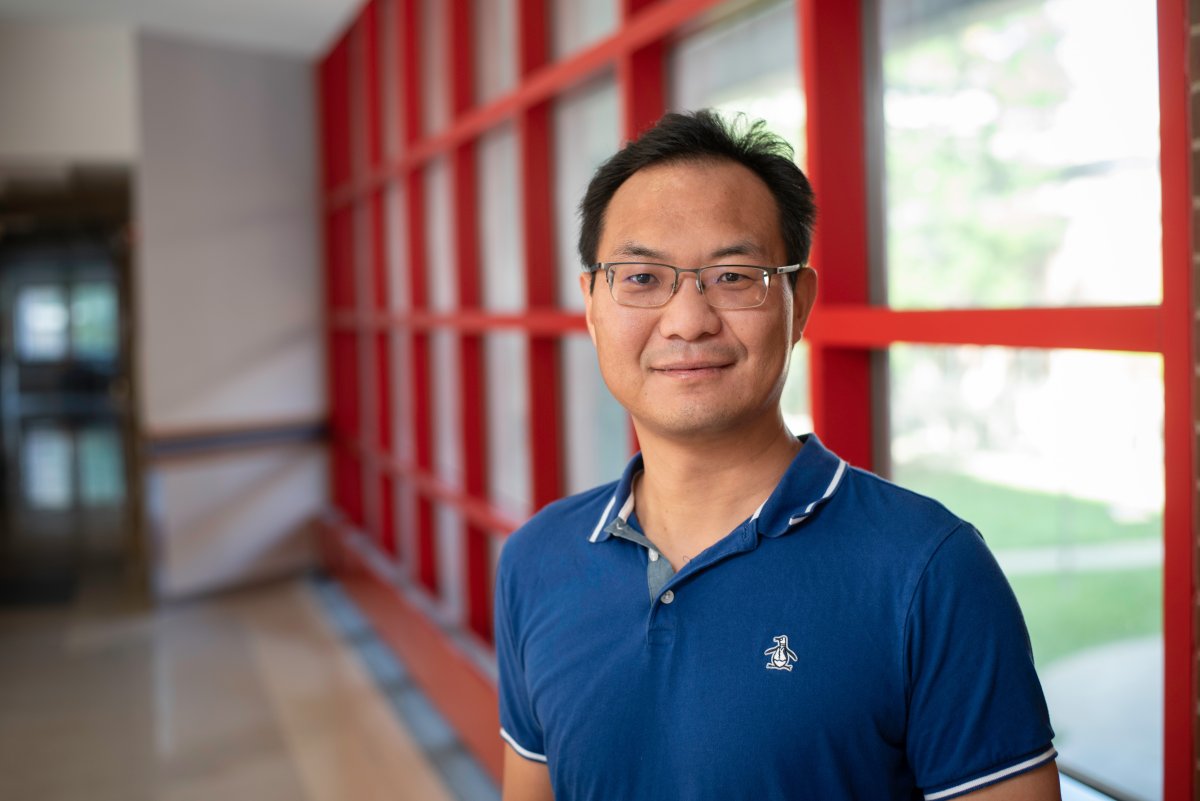Ju Sun Receives $4.5M in Funding for Medical AI Projects and Beyond

Department of Computer Science & Engineering Assistant Professor Ju Sun will receive a collective $4.5 million in funding from the National Institutes of Health (NIH) for two medical artificial intelligence (AI) projects. Sun’s Group of Learning, Optimization, Vision, healthcarE, and X (GLOVEX) works at the intersection of machine and deep learning, numerical optimization, computer vision, and data science, with an aspiration to push the frontiers of AI in order to tackle major unsolved problems in science, engineering, and medicine.
Sponsored by NIH, Sun has partnered with Associate Professor Christine Conelea from the Department of Psychiatry and Behavioral Sciences at the University of Minnesota on a project titled, “Quantification of Tics in Tourette’s Syndrome”. The $3.3 million project uses computer vision techniques to analyze video recordings of patients to detect tics - sudden twitches, movements, or sounds that people with Tourette’s Syndrome repeat uncontrollably.
“These movements tend to be tiny and only appear in a fraction of a second,” said Sun. “Often, doctors need to watch the video recording of the patients, frame by frame, for accurate diagnosis and prognosis. We are trying to develop novel video analysis and computer vision techniques to substantially cut down the time doctors painfully spend on this task. These kinds of analysis tools can be generalized; behavioral scientists would use similar techniques to analyze a lot of behavioral diseases.”
Sun and Conelea’s ambitious project will include 1,000 participants from around the world, unprecedented in scale. Patients with suspected tics will submit videos of themselves when they are having tics. That data will then be used to train the AI algorithms
Sun is also working with Rui Zhang, the founding division chief of Computational Health Sciences in the Department of Surgery at the U of M, on a project to develop an innovative AI-driven computational framework that addresses data imbalance issues in biomedical data science. Funded by the National Cancer Institute of NIH, this $1.2 million grant will specifically focus on imbalanced learning in the context of cardiotoxicity prediction for breast cancer survivors.
“When you learn to make sensible predictions with imbalanced data, that is, different parts of the data population are represented to different extents, many typical AI and machine learning tools fail because these tools are created assuming that data distribution is uniform,” said Sun. “In this project that is rated as highly innovative by NIH and NSF, we try to address these gaps by building novel and principled machine learning methods. This is a foundational development of research that can be applied to a lot of biomedical problems or diseases in the future.”
In addition to these two major NIH projects, Sun is working on two internal seed projects with a number of collaborators at the U of M. In partnership with the Departments of Chemical Engineering and Material Science (CEMS), Civil, Environmental, and Geo-Engineering (CEGE), and Industrial Systems Engineering (ISYE), Sun will tackle fundamental computational problems using deep learning methods. The $120K grant aims to provide a foundational, generalizable, and radically new numerical optimization framework that is expected to impact numerous domains.
Sun is also working on a College of Science Engineering InterS&Ections Seed Grant with CEMS and the School of Physics and Astronomy. This $90K project aims to expedite the discovery and characterization of quantum materials, a crucial component for implementing general-purpose quantum computing . Sun’s group will derive a new AI-enabled method to help make images of nanomaterials sharper.
In all of these projects, Sun has a goal of advancing the use of AI in different fields that have not seen as much progress as crown fields.
“All of these projects are about customizing and enhancing our AI to solve problems that have been rarely touched by AI development in the past 10 years,” said Sun. “From 2012 to very recently, AI development has been largely driven by a couple of fields—computer vision and natural language processing. These two fields are blessed by the availability of massive amounts of data. But for so many other fields, there is no such luxury, and we can’t collect enough data to train our AI models. We have to rethink how to do things. In all of these projects, we want to do a deep integration of AI in new domains.
“My group works on two kinds of projects, or more exactly, on the continuum between the two. One type of project is tied more to a specific problem, for example, the tics project. The other kind of project is more foundational. A good example of this is the imbalanced learning project that concerns almost all real-world AI problems and applications. We are equally interested in tackling fundamental issues in current AI and applying those techniques to new problems.”
Learn more about Ju Sun’s work on the GLOVEX website.